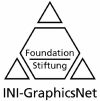Industrial Sponsors and Exhibitors






|
Call for Papers
ISMAR 2002 invites papers and poster submissions in the general
field of Mixed and Augmented Reality. See also: Dates
& Deadlines, Submission.
Topics include, but are not limited to
- MR/AR applications
- personal MR/AR information systems
- industrial MR/AR applications
- medical MR/AR applications
- MR/AR for architecture
- System architecture (hardware and software design)
- wearable computing
- distributed and collaborative MR/AR
- performance issues (approaches for achieving real-time
MR/AR)
- display hardware
- Information presentation
- real-time rendering
- photorealistic rendering (e.g., reflection analysis)
- object overlay and spatial layout techniques
- aural and haptic augmentation
- mediated reality
- Sensors
- position and orientation tracking technology
- calibration methods
- sensor fusion
- vision-based registration and tracking
- acquisition of 3D scene descriptions
- User Interaction
- interaction techniques for MR/AR
- collaborative MR/AR
- multimodal input and output
- Human factors
- usability studies
- acceptance of MR/AR technology, social implications
|

